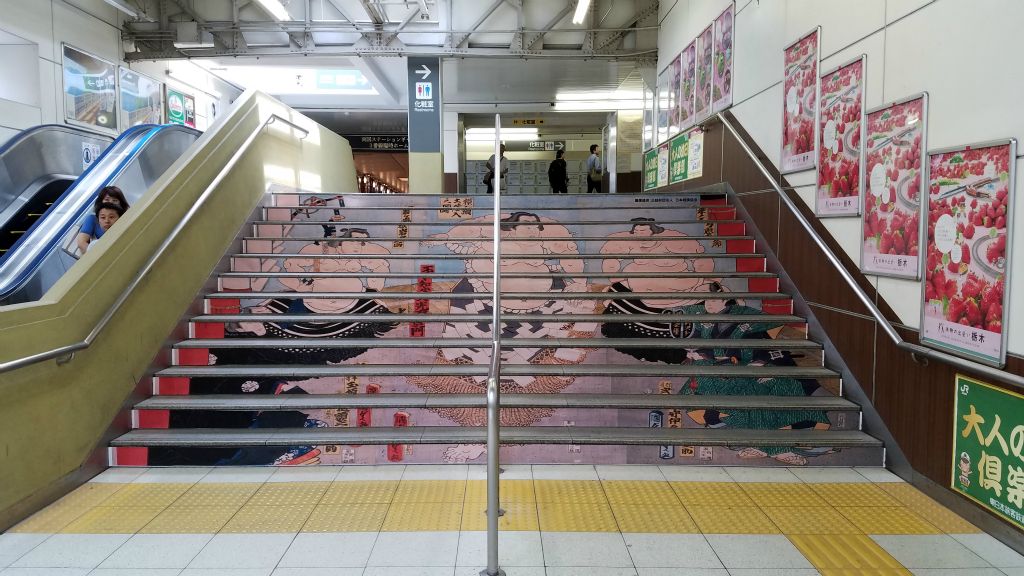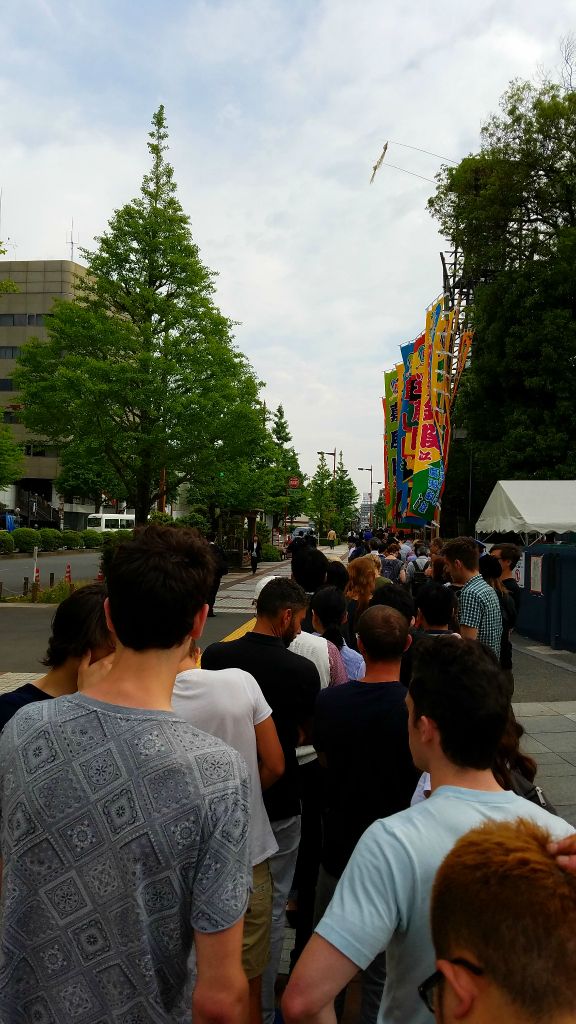Where and when: Ryoguku Kokugikan sumo hall, Tokyo, circa May 2018

What got me wondering if a tournament was in town was when one morning, I was walking around and I saw a sumo wrestler (rikishi) in a kimono, cycling in a hurry somewhere. (I wish I had been quick enough to snap a picture of him on that bicycle.) I don’t remember if I ended up doing an internet search or if I saw posted ads but I eventually found out there was indeed a tournament going on and that got me very excited as this would be a rare opportunity to experience a quintessential part of Japanese culture.

I moved hostels to one that was down the street from the sumo hall and one morning, woke up early to go line up for tickets as they sell out very quickly each day. It was quite an experience to see this old and iconic sport taking place. I didn’t realize just how many sumo wrestlers there were in Japan plying their trade. Beginning from 830 am until 330 pm and every 5-10 minutes, a match would happen, so one can do the math. According to Wikipedia, “The six divisions in sumo are: makuuchi (maximum 42 wrestlers), jūryō (fixed at 28 wrestlers), makushita (fixed at 120 wrestlers), sandanme (fixed at 200 wrestlers), jonidan (about 200 wrestlers), and jonokuchi (around 50 wrestlers).” With so many different divisions, the days started with the lower divisions and as we got to around 2 pm, the more senior division rikishis came out to wrestle, culminating with the best of the best battling it out.
Here’s a video showing a division of fighters being introduced before all the bouts in their division begins:
Here’s a video of an actual bout, from start (including the very interesting intro) until end:
The following website has information explaining what is going on in the video above, especially the meanings behind rituals performed. I think it can explain it better than I can.
Here’s the last fight of the day, involving the legendary rikishi, Yokozuna Hakuho (the title of Yokozuna is the highest rank a rikishi can earn):
On a side note, during lunch, I took a break and went to the basement to try some “chankonabe” stew, which is supposed to be a rikishi’s diet staple to put on weight. Per Wikipedia, “The dish contains a dashi or chicken broth soup base with sake or mirin to add flavor. The dish is not made according to a fixed recipe and often contains whatever is available to the cook; the bulk is made up of large quantities of protein sources such as chicken (quartered, skin left on), fish (fried and made into balls), tofu, or sometimes beef, and vegetables (daikon, bok choy, etc.). While considered a reasonably healthy dish in its own right, chankonabe is very protein-rich and usually served in massive quantities, with beer and rice to increase the caloric intake. Leftover chankonabe broth can also later be used as broth for sōmen or udon noodles.”

Overall, attending the sumo tournament was a wonderful and eye-opening experience. I have gained more of an understanding of a sport that, although most people know of, is still quite mysterious in many ways.